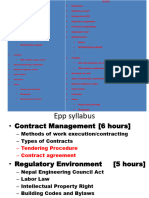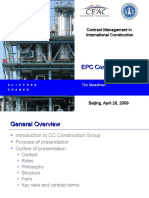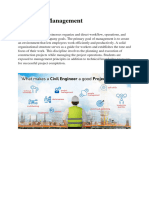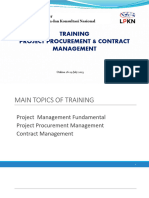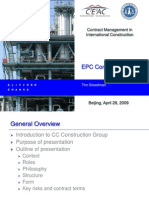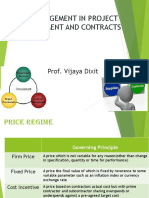0% found this document useful (0 votes)
11 views16 pagesEssential Guide To Projects Contracts Part 3
The document serves as an essential guide to project contracts, outlining the importance of clearly defining responsibilities and risks for both owners and contractors. It categorizes contracts into types such as turnkey, lump-sum, cost-plus, EPC, BOOT, and PPP, each with specific characteristics and applications. The guide emphasizes the need for clarity in scope and performance parameters to minimize ambiguities and ensure successful project execution.
Uploaded by
Walid MarhabaCopyright
© © All Rights Reserved
We take content rights seriously. If you suspect this is your content, claim it here.
Available Formats
Download as PDF, TXT or read online on Scribd
0% found this document useful (0 votes)
11 views16 pagesEssential Guide To Projects Contracts Part 3
The document serves as an essential guide to project contracts, outlining the importance of clearly defining responsibilities and risks for both owners and contractors. It categorizes contracts into types such as turnkey, lump-sum, cost-plus, EPC, BOOT, and PPP, each with specific characteristics and applications. The guide emphasizes the need for clarity in scope and performance parameters to minimize ambiguities and ensure successful project execution.
Uploaded by
Walid MarhabaCopyright
© © All Rights Reserved
We take content rights seriously. If you suspect this is your content, claim it here.
Available Formats
Download as PDF, TXT or read online on Scribd
/ 16

